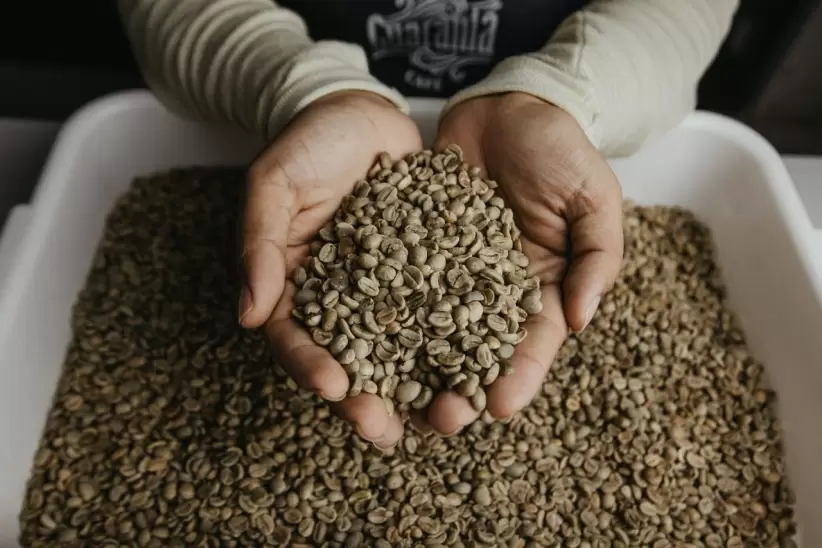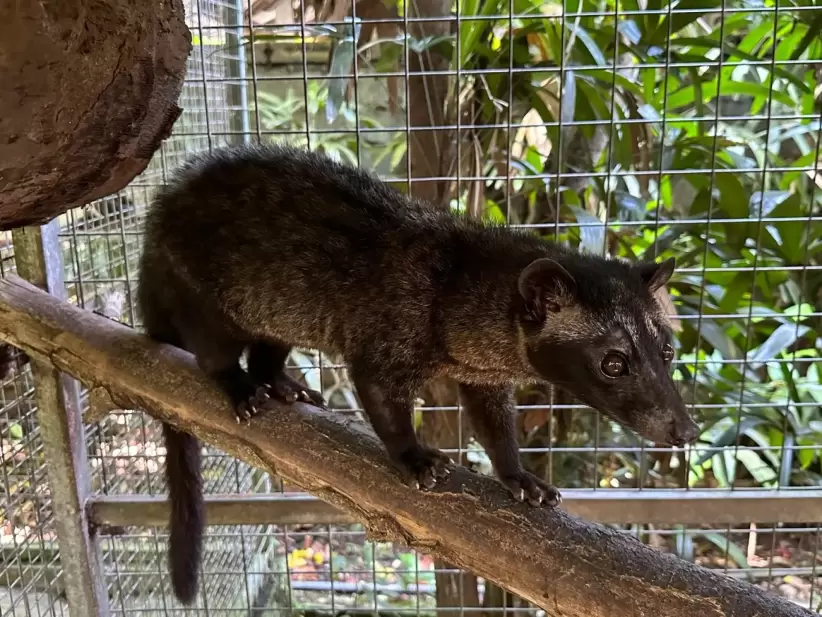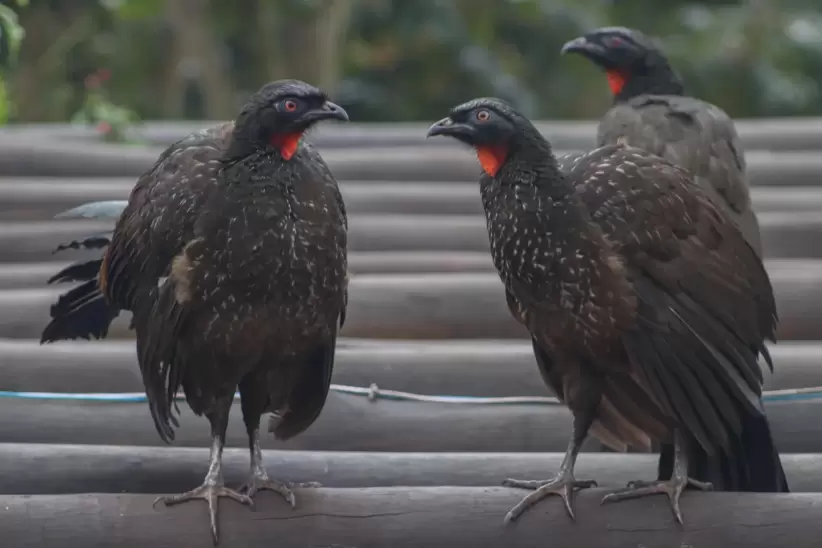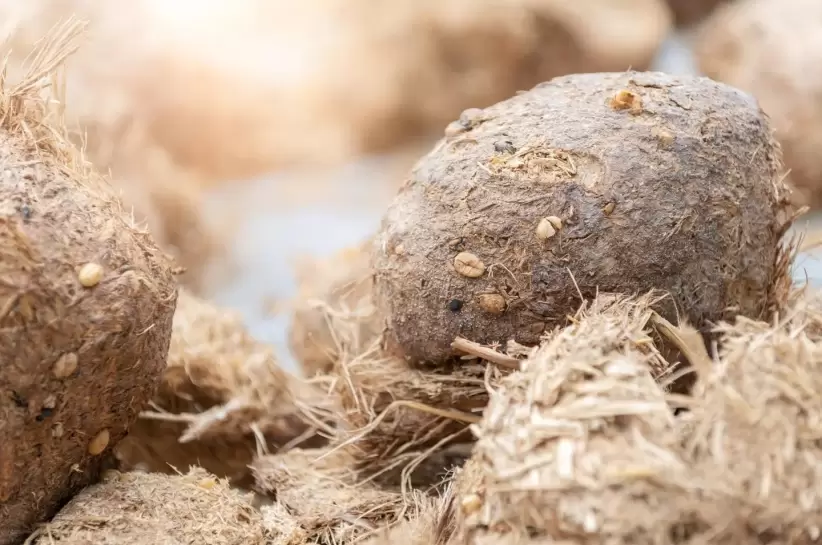Coffee bean processing involves removing the beans (seeds) from coffee cherries and preparing them for roasting. The two main methods are the washed (wet) process , in which the cherries are pulped, fermented, and washed to remove mucilage before drying, and the natural (dry) process , in which the cherries are dried whole with the fruit intact, allowing the beans to dry and absorb fruit flavors. A third method, the honey process, is a hybrid in which some of the fruit mucilage is left on the beans during drying, giving them a balance of sweetness and acidity.
Fermentation plays a crucial role in the processing of coffee beans, as it removes the mucilage (a sticky layer of fruit pulp) that surrounds the beans and develops flavor complexity. During fermentation , natural enzymes and microorganisms break down the sugars and proteins in the mucilage, modifying the acidity, sweetness, and overall flavor profile of the beans. This process cleans the beans and enhances the unique characteristics of the coffee, contributing to its flavor, aroma, and body.

There is a fourth way to process coffee cherries, allowing them toanimals digest them and then excrete the coffee beans.The digestive process removes mucilage from the beans and induces fermentation. The coffee’s flavor profile is further enhanced by acids and enzymes from the animal’s digestive tract. The excreted coffee beans were removed from the animal’s feces, washed, roasted and packaged for sale.
Animal processed coffees offer a truly unique taste experience.They provide less bitterness than regular coffee, a smoother flavor profile, more complex notes, and a fuller body. These distinctive flavors are a result of the animals’ selective feeding habits and the fermentation process in their digestive systems. This intriguing combination of factors makes these coffees unique and worth exploring.
Here is a list of coffees produced partially digested by animals, their production processes and tasting notes.
Kopi Luwak / Civet Coffee
Kopi Luwak rose to fame when it was featured in the 2007 film, The Bucket List . Although it is closely associated with Indonesia, particularly Sumatra, Java and Bali, Vietnam and the Philippines also produce civet coffee. In Vietnam, civet coffee is called Ca Phe Chon, which roughly translates to «weasel coffee». In the Philippines, it has several names: Kape Alamid (in the Tagalog regions); Motit Coffee (in the Cordillera region), Kape Melô or Kape Musang (in Mindanao) and Kahawa Kubing (in the Sulu Archipelago).
To make Kopi Luwak, the Asian palm civet , a small nocturnal mammal, is fed ripe coffee cherries. The cherries ferment in its digestive tract, where enzymes break down proteins and reduce acidity. The beans are then excreted, collected, thoroughly washed, dried and roasted.

Civet coffee is often distinguished between farm-grown and wild-produced. The animals are caged and fed coffee cherries on farms that produce civet coffee. In wild-produced coffee, the animals roam freely and eat cherries from wild coffee trees. The latter type is very rare.
On the nose, Kopi Luwak is earthy, musty and compost-like, with hints of chocolate and nuts. It is smooth and rich on the palate , with low acidity and notes of caramel, chocolate and sometimes floral nuances. The finish is rich, with a creamy, syrupy mouthfeel, with lingering notes of caramel and mocha.
Black Ivory Coffee / Elephant Coffee
Black Ivory coffee is produced in Thailand from coffee beans partially digested by elephants . Arabica coffee cherries are mixed with the elephants’ favorite foods and fed to them; they ferment in the elephant’s digestive tract, where acids and enzymes break down the bitterness. The beans are then excreted, collected, cleaned, sun-dried, and roasted.
The coffee is distinctly floral on the nose, with hints of chocolate and spice. The flavour is smooth and well-balanced, with fruity and nutty nuances, hints of chocolate, citrus and tamarind, and a unique herbaceous and floral finish. The finish is long, creamy and sweet, with no bitterness and a lingering citrus aroma.
These coffees are unique in taste and scarcity. For example, the annual production of Black Ivory coffee is only around 225 kilos. Its labor-intensive production and rarity make it truly exclusive. This rarity increases the appreciation and appeal of these animal-processed coffees, making them a must-try for any coffee enthusiast.
Jacu Coffee
Jacu coffee is produced in Brazil. The Jacu bird, a pheasant-like bird native to Brazil , eats ripe coffee cherries. The beans pass through its digestive system, undergo fermentation, and are excreted. Farmers pick the beans, wash them, dry them in the sun, and roast them.

The coffee is slightly sweet, with hints of chocolate and nuts. The flavor is bright and fruity, with medium acidity and a balanced sweetness. It features flavors of nuts, anise/licorice, black pepper, peanuts, and chocolate, hints of whole wheat bread and molasses, and subtle fruity notes. The finish is fresh, with a mild citrus aftertaste.
Bat Coffee
Bat coffee is produced in Madagascar and parts of Southeast Asia. Wild bats consume coffee cherries but do not fully digest the beans; they nibble on and partially ferment the cherries in their mouths. The partially digested cherries, covered in saliva, are then collected from the ground, washed, and processed. Unlike other coffees, this process does not involve digestion, only fermentation during chewing .
The coffee is floral and fruity with tropical hints . The flavor is bright and clean on the palate, with notes of mango, papaya and guava. The finish is refreshing and slightly sweet, with vibrant acidity.
Coati Coffee / Costa Rican Civet Coffee
Coati coffee is produced in Costa Rica. The coati is a civet-like animal native to Central and South America, and is related to the Asian civet. Coatis eat ripe coffee cherries. The beans pass through their digestive system, fermenting during digestion. The beans are excreted, collected, washed, and roasted.

The coffee is sweet and nutty, with hints of fruit. The palate is smooth, with balanced acidity and notes of dark chocolate, caramel and tropical fruits. The finish is long and sweet, with a creamy mouthfeel.
Monkey Parchment Cafe
Rhesus monkeys or Formosan rock macaques produce Monkey Parchment coffee. The monkeys chew coffee cherries and spit out the seeds. This partial fermentation during chewing alters the flavor . Farmers collect the spit out beans, clean them, and process them. The coffee is sweet and fruity with notes of peach on the nose. The coffee is bright, with notes of peaches, apricots, and a soft nutty flavor on the palate. The finish is light, clean, and refreshing, with a slight fruity sweetness.
Wild elephant dung coffee
This coffee is produced by wild elephants in India, especially in the Western Ghats. The elephants eat wild coffee cherries, digest them and excrete the beans. The beans are collected, cleaned, sun-dried and roasted. The coffee has a nutty aroma with earthy and chocolate notes. The flavour is smooth and rich on the palate, with nuances of chocolate and nuts and a hint of spice. The finish is creamy and round, with a mild acidity.
These «animal-assisted» coffee production processes are among the rarest and most expensive coffees in the world, andSome coffees sell for between US$500 and US$1,000 per pound (just under half a kilo).Fermentation and partial digestion in the stomachs of animals enhances the complexity and richness of the coffee, creating a unique aroma and flavor profile, making each type highly appreciated and memorable. If you are a coffee lover, you should try these «animal-assisted coffees» even if just once.

